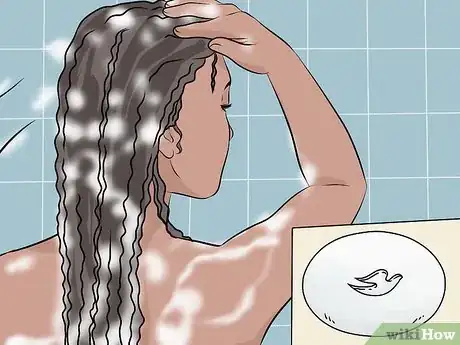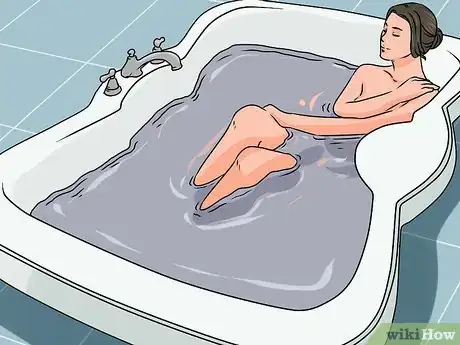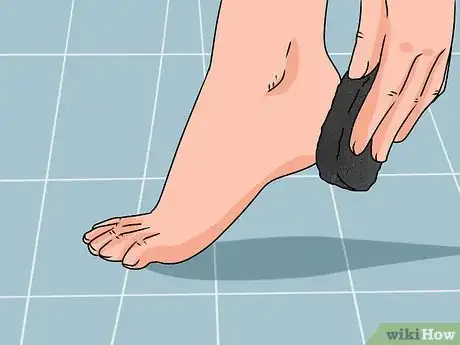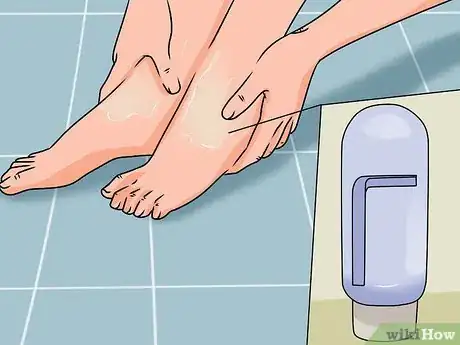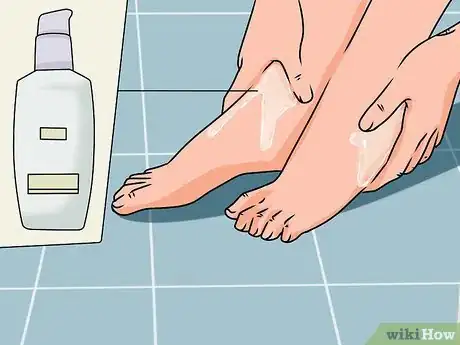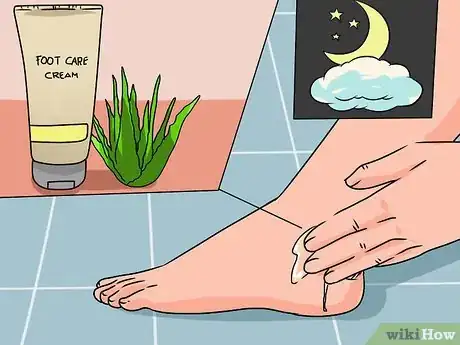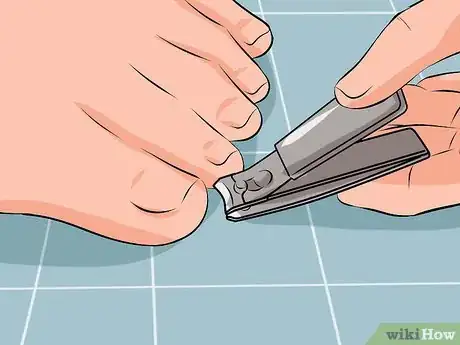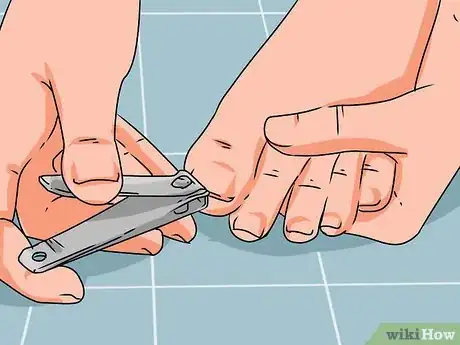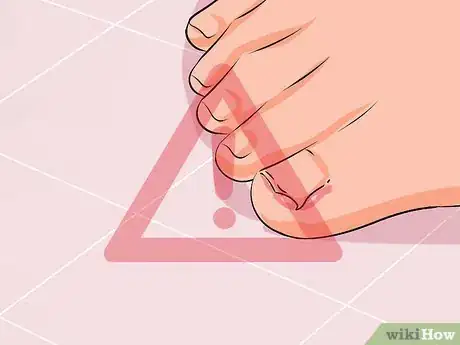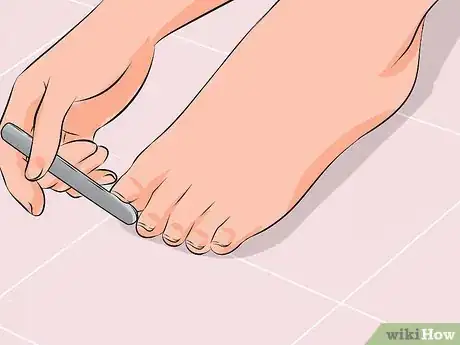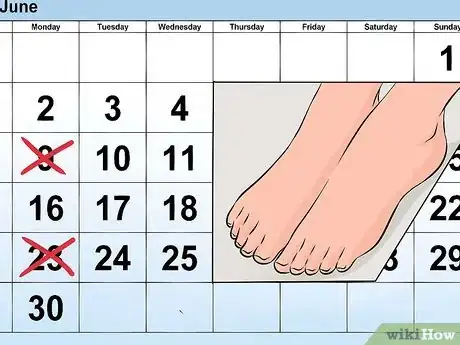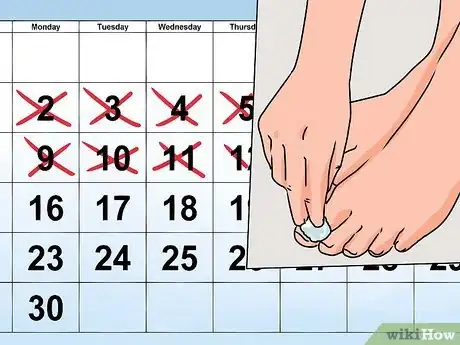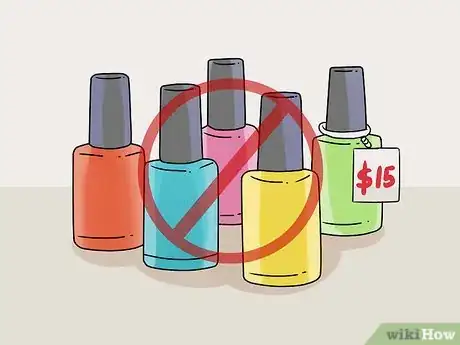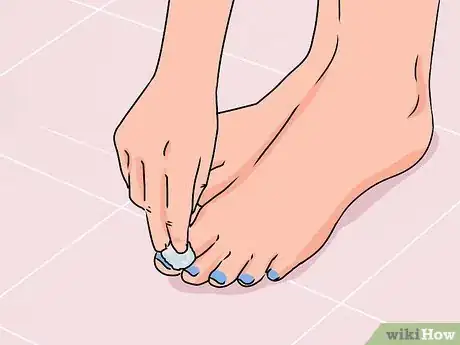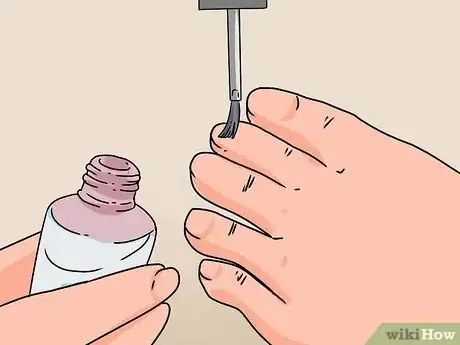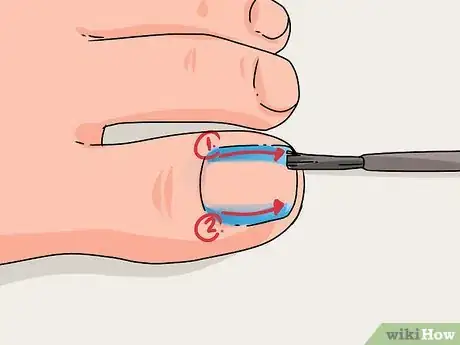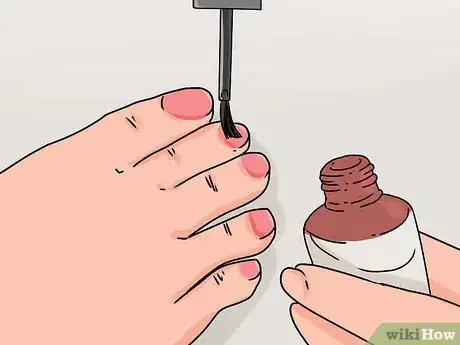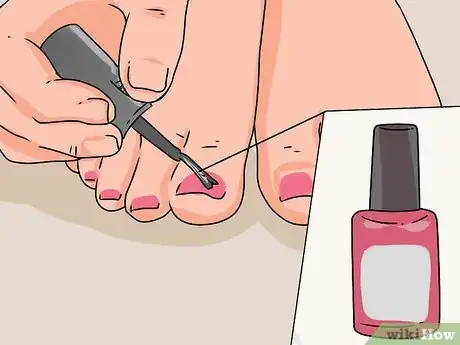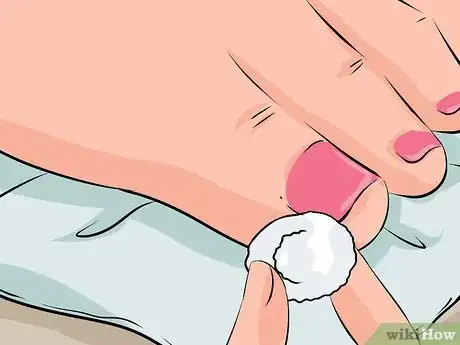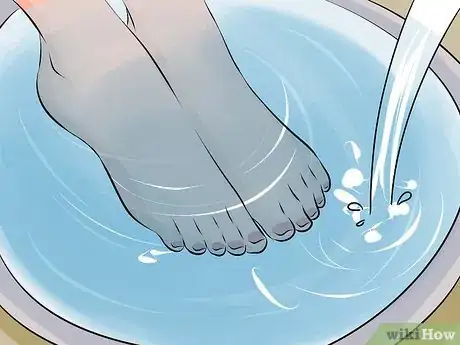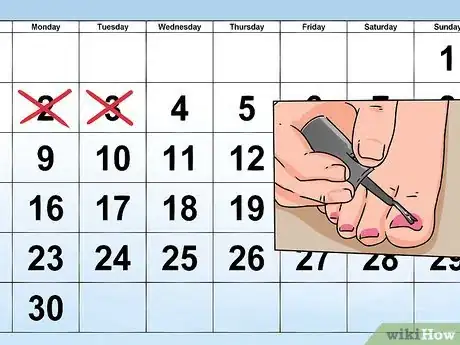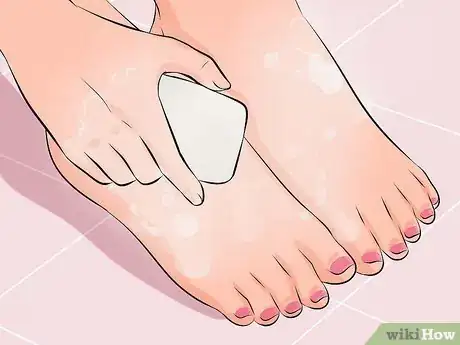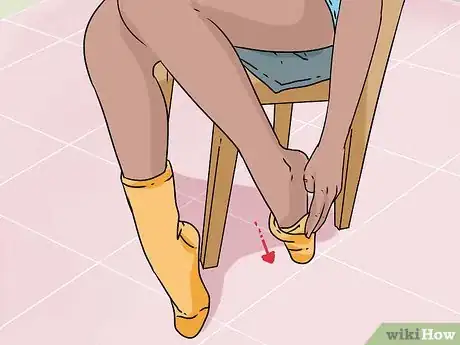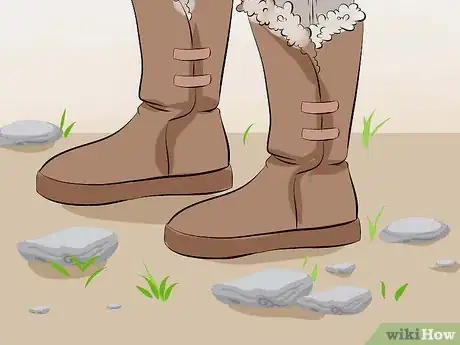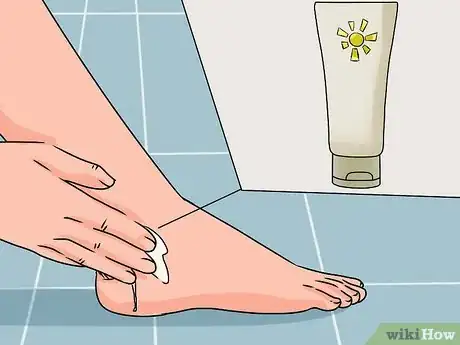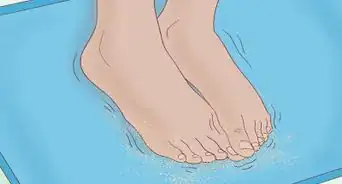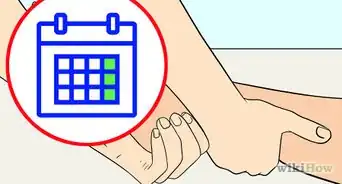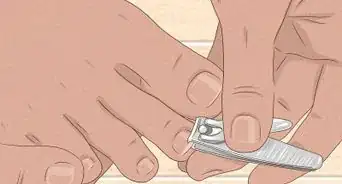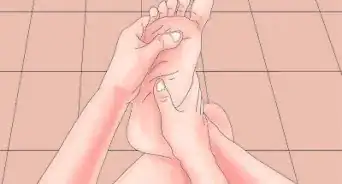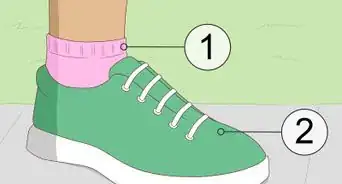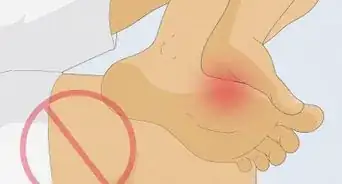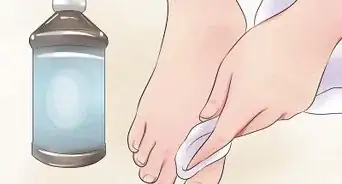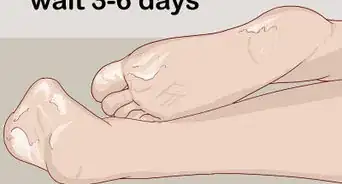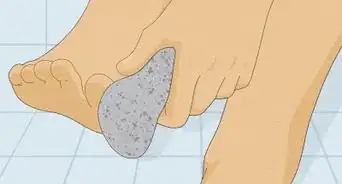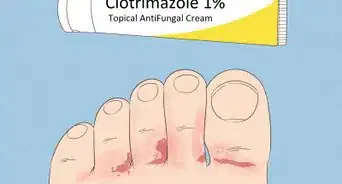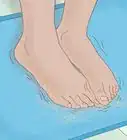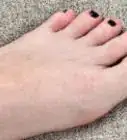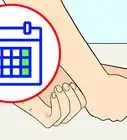This article was co-authored by Catherine Cheung, DPM. Dr. Catherine Cheung is a board certified Podiatrist based in San Francisco, California. Dr. Cheung specializes in all aspects of foot and ankle care, including complex reconstruction. Dr. Cheung is affiliated with the Brown & Toland Physicians and the Sutter Medical Network. She earned a DPM from the California College of Podiatric Medicine, completed her residency at the Encino Tarzana Medical Center, and completed a fellowship at the Kaiser Permanente San Francisco Medical Center. She is board certified by the American Board of Podiatric Surgery.
There are 12 references cited in this article, which can be found at the bottom of the page.
wikiHow marks an article as reader-approved once it receives enough positive feedback. In this case, 80% of readers who voted found the article helpful, earning it our reader-approved status.
This article has been viewed 480,807 times.
You can have the beautiful feet you've always dreamed of. You just need to get rid of your dry skin and keep your feet moisturized. You also need to learn to trim your toenails properly and paint them properly (if you wish). Finally, you need to help maintain the health of your feet over time, so you'll have beautiful feet for many years to come.
Things You Should Know
- Scrub off dead or dry skin using an exfoliant, like a pumice stone.
- Always moisturize after you get out of the shower to keep your feet from drying out.
- Trim your toenails straight across and use a file to shape them.
- Paint your toenails if you want to give your feet a boost of color, and don’t forget the sunscreen when you’re showing your feet off in public.
Steps
Removing Dry Skin and Moisturizing
-
1Use gentle soap in the shower. Harsh soaps can make dry skin worse. Try something like Dove, Cerave, or Cetaphil. Look for words like "For Sensitive Skin" and "Moisturizing."[1]
-
2Keep it warm. When you shower or bathe, it's best to stick with just lukewarm water. Hot water can dry out skin even more.[2]Advertisement
-
3Scrub off dead skin with an exfoliant. Board-certified podiatrist Catherine Cheung suggests "using a pumice stone, which is great for self-care maintenance at home." Near the end of your shower or bath, gently scrape your feet with a foot file or pumice. You can also do it after your bath if you prefer. If you have a medical condition like neuropathy, nerve issues, or diabetes, Cheung advises "talking to your doctor or seeing a professional for any foot-related care."
- Another option is to use a liquid foot scrub that is designed to exfoliate. Rub it on in the shower and wash it off.
- Some people have had good luck with a foot soak of 1 part Listerine, 1 part vinegar, and 2 parts warm water. Soak your feet in it for 20 minutes. However, you'll likely still need to use a physical exfoliant.
-
4Seal in moisture. Apply a lotion after you bathe or shower. Showering and bathing can dry out your skin, but applying lotion locks in the moisture that showers leave behind.[3]
- If you think your cuticles don't look pretty, try paying special attention to them when you're rubbing in moisturizer. Gently massage each edge of your cuticle with cream.[4]
-
5Try oil-based lotions. If your regular lotions aren't cutting it, it's fine to use an oil-based lotion on your feet. You can also just use plain petroleum jelly.[5] These types of creams are too heavy for places like your face, but they can help out severely dry areas like cracked heels.
-
6
Keeping Toenails Pretty
-
1Trim toenails straight across. Trimming straight across creates a pleasing effect, but it can also limit ingrown toenails.[9] However, you can round off the corners with a file so you don't scratch yourself with your toenails.
- Trim your nails when they're dry. You'll get a cleaner cut.[10]
- Pick out clippers meant for toenails, as they are less rounded and made to cut thicker nails.[11] You may find that nail nippers work even better, especially if you have nail fungus, because they are sharper and easier to control. They look like small wire cutters.[12]
- Skip cutting cuticles. They help protect you from infection.[13]
-
2Cut toenails to the proper length. Your toenails should be about as long as your toes. If they're any longer, they may rub against your shoes. If they're too short, it can lead to infection.
-
3Watch for ingrown toenails. An ingrown toenail happens when the edge of your toenail pushes into your skin. You may notice your toe is red, some swelling, or some pain.
- To deal with an ingrown toenail yourself, bathe your feet in warm water for about 20 minutes, which can help relieve pain and swelling; acetaminophen and ibuprofen can also help with the pain. Place cotton or dental floss under the edge, to help the nail grow properly; put new pieces back in after each time you soak it. To keep it from getting infected, use antibiotic ointment and then cover the area with a bandage. It can also help if your shoes are loose-fitting or open around the toes.
- Proper toenail maintenance can help keep you from getting ingrown toenails, such as cutting straight across and keeping toenails at the proper length.[14]
- You can deal with ingrown toenails yourself. However, you may need to see your doctor about one if you are having a great deal of pain. Also, redness moving up your toe or pus coming from the wound could be a sign of a more serious infection. Also, if you have diabetes, it's important to take action when you notice any problems with your feet.
-
4Clean under your toenails. Run a manicure stick under your nails. Don't push too hard, as you can separate the nail from the nail bed. Running a manicure stick will help keep them clean and beautiful.[15]
-
5Take a break from polish occasionally. While it's fine to use polish, you also need to take a break from it every once and awhile. Keep away from it about a fourth of the time, taking a week off a month. That will give your toes a breather and allow them to regain moisture.[16]
-
6Remove nail polish before 2 weeks is up. If you leave it on for longer, you can stain your toenails. However, adding a clear base coat before painting your toenails can help alleviate this problem.[17]
- If you do have stained nails, check to see if they're also hard and brittle. If so, you likely have a toenail fungus. Ask your doctor about the condition.[18]
Painting Your Toenails
-
1Skip the expensive brands. While expensive brands do have nice polish, you can get equal quality with less expensive brands. You don't have to spend $15 for a bottle. Try a couple of cheaper brands to see which ones you like best.
-
2Remove grease and old nail polish. Before you start painting, dip a cotton ball in some nail cleaner. Run it over your toenails to remove any nail polish. Next, use a small brush with some hand soap and to scrub down your nails, removing any grease. Rinse thoroughly. Grease can and dirt can cause your nail polish to lift off, so you want your nails clean. Dry them well.[19]
-
3Put on a base coat. Apply a thin layer of a clear base coat. It helps protect the nail, but it can also give you a stronger, smoother finish.[20]
-
4Use the three-stroke method. With a large drop of polish, brush to the left and then to the right. Finally, place a stroke down the middle of the nail.[21]
-
5Don't forget a second coat. For a really solid color, a second coat is essential. However, you need to wait a few minutes before applying, or you could mess up your first coat.[22]
-
6Use a slow-drying topcoat. Topcoats protect your polish, and the slow-drying kind is the best. It dries harder, meaning your pedicure will last longer.[23]
-
7Use a small brush or cotton swab for cleanup. Dip it into nail polish remover. Use it to gently rub off the nail polish anywhere you got it that you didn't want it.
-
8Dry your toenails faster. To keep them from smearing, try running them under cold water. It can help them dry faster, meaning you'll keep them prettier.[24]
-
9Keep your toenails pretty. To help extend your pedicure, try applying a new layer of top coat every 2 days or so. Doing so will help protect against chips and nicks.[25]
Taking Care of Your Feet
-
1Wash your feet daily. Washing your feet everyday helps keep fungus at bay. Be sure to dry your feet thoroughly, as wet feet are a breeding ground for fungus and bacteria.[26]
-
2Make sure your feet stay dry. If you have issues with sweating, make sure to switch out your socks often. Doing so helps keep your feet drier, which in turn helps keep athlete's foot and other fungus away.
-
3Wear your shoes. It's best to wear shoes all the time, even around the house. It helps keep infections away from your feet, plus you skip getting ugly scratches and punctures. Board-certified podiatrist suggests "getting shoes made with a more natural or breathable material, as well as getting socks that are more breathable." Cheung also warns that "non-breathable socks and shoes create a warm, moist environment that supports fungal growth."
-
4Put on sunscreen. You may not think about putting on sunscreen at the beach. However, that skin needs protection just like the rest of your body. Putting on sunscreen will help keep your feet pretty in years to come, as sun can accelerate aging.
Expert Q&A
Did you know you can get expert answers for this article?
Unlock expert answers by supporting wikiHow
-
QuestionHow can I take care of my feet naturally?
 Catherine Cheung, DPMDr. Catherine Cheung is a board certified Podiatrist based in San Francisco, California. Dr. Cheung specializes in all aspects of foot and ankle care, including complex reconstruction. Dr. Cheung is affiliated with the Brown & Toland Physicians and the Sutter Medical Network. She earned a DPM from the California College of Podiatric Medicine, completed her residency at the Encino Tarzana Medical Center, and completed a fellowship at the Kaiser Permanente San Francisco Medical Center. She is board certified by the American Board of Podiatric Surgery.
Catherine Cheung, DPMDr. Catherine Cheung is a board certified Podiatrist based in San Francisco, California. Dr. Cheung specializes in all aspects of foot and ankle care, including complex reconstruction. Dr. Cheung is affiliated with the Brown & Toland Physicians and the Sutter Medical Network. She earned a DPM from the California College of Podiatric Medicine, completed her residency at the Encino Tarzana Medical Center, and completed a fellowship at the Kaiser Permanente San Francisco Medical Center. She is board certified by the American Board of Podiatric Surgery.
Board Certified Podiatrist
-
QuestionHow do you get healthy toenails?
 Catherine Cheung, DPMDr. Catherine Cheung is a board certified Podiatrist based in San Francisco, California. Dr. Cheung specializes in all aspects of foot and ankle care, including complex reconstruction. Dr. Cheung is affiliated with the Brown & Toland Physicians and the Sutter Medical Network. She earned a DPM from the California College of Podiatric Medicine, completed her residency at the Encino Tarzana Medical Center, and completed a fellowship at the Kaiser Permanente San Francisco Medical Center. She is board certified by the American Board of Podiatric Surgery.
Catherine Cheung, DPMDr. Catherine Cheung is a board certified Podiatrist based in San Francisco, California. Dr. Cheung specializes in all aspects of foot and ankle care, including complex reconstruction. Dr. Cheung is affiliated with the Brown & Toland Physicians and the Sutter Medical Network. She earned a DPM from the California College of Podiatric Medicine, completed her residency at the Encino Tarzana Medical Center, and completed a fellowship at the Kaiser Permanente San Francisco Medical Center. She is board certified by the American Board of Podiatric Surgery.
Board Certified Podiatrist
References
- ↑ http://www.nationwidechildrens.org/dry-skin-care
- ↑ http://www.nationwidechildrens.org/dry-skin-care
- ↑ http://www.nationwidechildrens.org/dry-skin-care
- ↑ http://www.webmd.com/beauty/nails/ss/slideshow-pedicure
- ↑ http://www.diabetes.org/living-with-diabetes/complications/foot-complications/
- ↑ http://www.webmd.com/beauty/nails/expert-answers-to-your-foot-care-questions
- ↑ http://www.vivawoman.net/2010/01/viva-challenge-wear-your-socks-to-bed/
- ↑ http://www.webmd.com/beauty/nails/expert-answers-to-your-foot-care-questions
- ↑ http://www.everydayhealth.com/foot-health/toenail-cutting-tips.aspx
- ↑ http://www.everydayhealth.com/foot-health/toenail-cutting-tips.aspx
- ↑ http://www.everydayhealth.com/foot-health/toenail-cutting-tips.aspx
- ↑ http://www.mayoclinic.org/healthy-lifestyle/adult-health/multimedia/nails/sls-20076741?s=2
- ↑ http://www.cdc.gov/healthywater/hygiene/hand/nail_hygiene.html
- ↑ https://www.mayoclinic.org/diseases-conditions/ingrown-toenails/symptoms-causes/syc-20355903
- ↑ http://www.webmd.com/beauty/nails/ss/slideshow-pedicure
- ↑ http://www.webmd.com/beauty/nails/ss/slideshow-pedicure
- ↑ http://www.webmd.com/beauty/nails/ss/slideshow-pedicure
- ↑ http://www.webmd.com/beauty/nails/ss/slideshow-pedicure
- ↑ http://www.goodhousekeeping.com/beauty/nails/tips/a23786/manicure-mistakes/
- ↑ http://www.cosmopolitan.com/style-beauty/beauty/how-to/a5101/things-about-painting-your-nails-you-might-not-know/
- ↑ http://www.cosmopolitan.com/style-beauty/beauty/how-to/a5101/things-about-painting-your-nails-you-might-not-know/
- ↑ http://www.goodhousekeeping.com/beauty/nails/tips/a23786/manicure-mistakes/
- ↑ http://www.goodhousekeeping.com/beauty/nails/tips/a23786/manicure-mistakes/
- ↑ http://www.cosmopolitan.com/style-beauty/beauty/how-to/a5101/things-about-painting-your-nails-you-might-not-know/
- ↑ http://www.goodhousekeeping.com/beauty/nails/tips/a23786/manicure-mistakes/
- ↑ http://msue.anr.msu.edu/news/keeping_your_feet_healthy
About This Article
To make your feet beautiful, exfoliate them with a pumice stone or foot file after you shower so they're nice and soft. Then, rub lotion into them to help lock in moisture and prevent them from drying out. Alternatively, if your feet are particularly dry, put lotion on them before bed and then put on a pair of socks to deeply moisturize them overnight. In addition to keeping your feet soft and hydrated, remember to trim and file your toenails regularly so they stay looking nice and don't become ingrown. To learn how to paint your toenails, scroll down!
